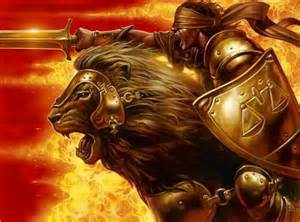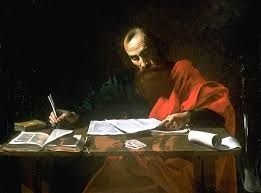The symbolism in the Passover is amazing. Learn how the Afikomen points to Christ.
IT’S WORTH CONSIDERING
Today is the third day of the Feast of Unleavened Bread (Mazot), which began on Passover (Tuesday, March 26). At the heart of Passover is the Seder (meaning “order”), and at the heart of the Seder are the three matzahs (unleavened bread) which are placed on the Passover table with one matzah in each pocket of the embroidered matzah tash (linen bag). At a specified time in the service, the leader removes the middle matzah from the linen bag and breaks it in half. One half is replaced while the other is wrapped in a linen napkin and hidden somewhere in the house while the children cover their eyes. Later in the service, after the meal, the children are sent out to find the hidden matzah. It is called the Afikomen. The child who finds it receives a reward. A small piece of it is broken off and given to everyone present. They are to eat it as a reminder of the Passover lamb.
AS I SEE IT
The presence of the afikomen represents a profound spiritual truth that unfortunately is completely missed by most Jews. To grasp the significance, we must first understand that the afikomen was not part of the service in Jesus’ day. It was added later. The last solid food in Jesus’ day was the lamb at the dinner. According to rabbinic tradition, the afikomen was added to represent the lamb, and, therefore, had to be eaten by everyone. By consensus, the rabbis agreed that the word must mean dessert, since it is to be eaten after the meal.
A little research reveals just how wrong they were. Afikomen is the only Greek word in the entire service. Everything else is in Hebrew. It is translated “I came.” Think about that. After Jesus had ascended to heaven, God saw to it that a foreign word, one that called attention to itself by its sheer uniqueness, was added to His divinely mandated memorial service. It’s significance is further heightened by the fact that it was the middle of the three matzahs and the only one that was broken.
In an attempt to attach more significant meaning to the three matzahs, some rabbinic authorities have suggested that they represent the three groups of Jewish people: the priests, the Levites, and the Israelites. Others suggest that they represent Abraham, Isaac, and Jacob. Since the middle matzah is to be broken, the middle of each three must have been broken in a unique way. For this, they have absolutely no explanation. This is because they have totally missed the point. The only explanation that makes sense is that the three represent the Father, the Son, and the Holy Spirit, and it was the second person the Trinity, the one who came, that had to be broken for the redemption of mankind.
From beginning to end, the Passover is all about Yeshua (Jesus) the Messiah, the one who came to take on our sin that we might become the righteousness of God. What will you do with Jesus this year?
came to take on our sin that we might become the righteousness of God. What will you do with Jesus this year?
For a related article, click here.
ON THE LIGHTER SIDE
An actual church announcement:
The pastor will preach his farewell message after which the choir will sing “Break Forth Into Joy.”





Leave A Comment